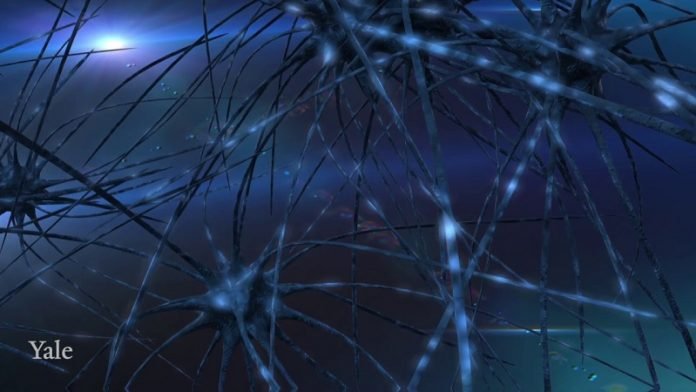
Scientists routinely capture images of the brain in action by focusing on single molecules, cells, or circuits.
But visualizing how these tiny units interact to create complex behavior has been a daunting task.
Now, in a collaborative, multi-lab effort, researchers at Yale University have developed a way to leverage a pair of microscopic technologies to provide a glimpse of the entire brain at work in real time.
They report their work in the journal Nature Methods.
“Merging widely different scales of understanding is a fundamental challenge in neuroscience,” said Michael Higley, associate professor of neuroscience and member of Yale’s Kavli Institute for Neuroscience.
“With this novel approach, we are bridging the gaps between molecular, cellular, and systems biology.”
Higley and Michael Crair, the William Ziegler III Professor in the Department of Neuroscience, led the study, which was funded by the National Institutes of Health BRAIN Initiative.
The Yale teams used two different types of imaging technology: two-photon microscopy to capture the activity of single neurons, and mesoscopic imaging to highlight widespread patterns of network activity across the brain.
The team developed a unified platform for visualizing these contrasting scales of activity.
In other, ongoing studies, Yale researchers have added fMRI to this platform, enabling investigators to link brain activity to learning and cognitive processing in mice.
The teams’ work is part of a larger collaborative effort at Yale that involves the laboratories of Todd Constable, professor of radiology and biomedical imaging, and Jessica Cardin, associate professor of neuroscience.
“The scope of this enormous undertaking could only be carried out at an institution like Yale, where the unique combination of diverse backgrounds and collaborative spirit enables us to greatly expand our understanding of the nervous system,” Higley said.
Researchers expect the new technology will ultimately help scientists track the role of specific molecules, cells, and brain networks in human behavior and disease.
Written by Bill Hathaway.



